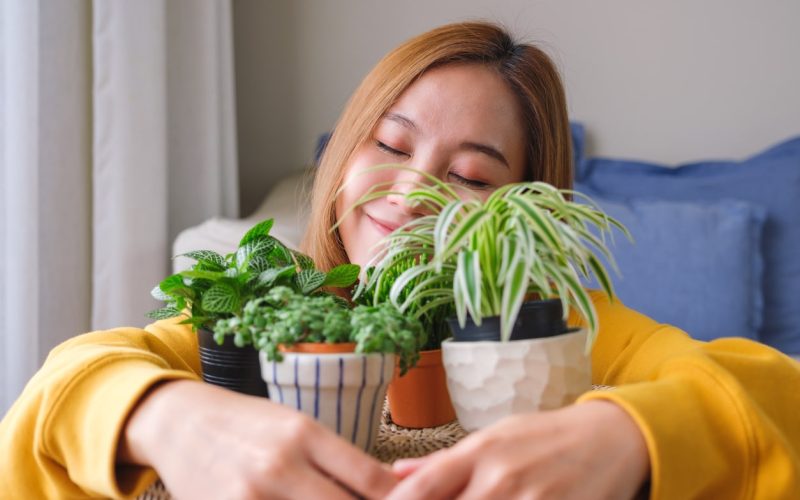Although indoor plants increase the aesthetics and beauty of a room or workspace, you will find a few people sneezing when they come in close vicinity of house plants. If you are suffering from allergies, you might wonder which allergen triggers your allergy. In this light, the role of indoor plants is significant, and you must be extra careful before bringing that beautiful flowering plant into your home.
The present narrative highlights the worst houseplants for allergies. If you are aware, then you can surely limit the exposure to allergens and can have a safe and healthy changing seasons.
The plants typically aggravate the symptoms if they bloom or spore, as pollens are mostly the root cause of allergic reactions. However, if you have a severe allergy to airborne allergens, it is best to wave goodbye to these worst indoor plants for allergies.
Challenge of Allergy in the United States
The United States encounters a significant challenge with allergies, which negatively impacts millions of people throughout the year. According to the American College of Allergy, almost 50 Million Americans Have Allergies. Some of the common air allergy-inducing substances include pollen from trees, grasses, weeds, dust mites, mold spores, dust, and petfur.
Allergies can result in symptoms from watery eyes, itching, runny nose, and sneezing to congestion. Additionally, climate change and rising temperatures can also aggravate allergic reactions and symptoms, as the pollen season has become elongated.
The Air-born allergies in the United States can be understood as in February to May trees. Because allergies, from April to June Grasses, are the main causative factors. From July to November, weeds may worsen the symptoms of allergies.
Worst Houseplants for allergies
Before investing in your new indoor plants, it is best advised to ensure that the plant does not trigger allergies. We will inform you about some plants that are more likely to cause symptoms in people with allergic rhinitis.
- Chrysanthemums and common ferns like lilies and geraniums can provide exposure to airborne allergens. That can trigger contact dermatitis, according to the Institute of Medicine’s 1993 book, Indoor Allergens. Moreover, tulips and lilies can lead to hives in people who are allergic to them.
- Ornamental plants such as ficus benjamina (weeping fig) can aggravate allergic reactions in people who are prone to allergies.
- Hoya compacta, also known as wax plant, can produce respiratory symptoms such as nasal congestion, runny nose, and sneezing.
- Pine trees, according to the American College of Allergy, Asthma, and Immunology, which are used for decoration, can give harbor weed produced during fall months that have accumulated on branches of the plant.
Houseplants cannot make drastic improvements to enhance the air quality. But they still can be an eye-catching décor choice that can bring a natural touch to any living space. If you can take care to prevent soil mold growth and present the above-discussed house plants that can trigger an allergic reaction in people with allergies, then you should not have any issues with having indoor plants.
Worst Weeds for allergies
According to the researchers, around 15% of Americans have an allergy to ragweed pollen. Ragweed belongs to the aster family and is a flowering plant. Most species are native to North America of this plant. No one grows weeds, but they grow on their own if they are not actively removed during the regular maintenance of personal gardens.
Apart from ragweed, a few other weeds that create problems with people who have allergies are burning bush, cocklebur, lamb’s quarters, mugwort, pigweed, Russian Thistle, Sagebrush, and tumbleweed.
Worst Flowers for Allergies
Flowers and vines that reproduce through wind pollination can also worsen the symptoms of hay fever and other allergic reactions in some people. Because of its lightweight nature pollen reaches long distances and remains in the air for extended periods. This includes flowering plants like daisies, marigolds, sunflowers, and chrysanthemums.
When someone who has an allergy to pollen comes into contact with these particles, his immune reacts to the symptoms. It causes symptoms like sneezing, runny or stuffy nose, itchy or watery eyes, and in some cases, exacerbating asthma symptoms.
Conclusion
The plants with wind pollination are considered bad houseplants for allergies. The pollen grains of these plants are small and lightweight, which makes them easy to inhale and cause many allergic reactions. Symptoms include sneezing, runny or stuffy nose, itchy or watery eyes, and in some cases, exacerbating asthma symptoms.
Individuals can lower their exposure by picking indoor plants that are allergy-safe, which includes plants that depend on birds or insects for pollination. Not all people with allergic rhinitis or hay fever are allergic to all of them, but it is best to avoid them to be on the safer side.
Note – If you are suffering from any type of allergy it is important to get professional treatment because allergic reactions can be more critical if the victim ignores it.

